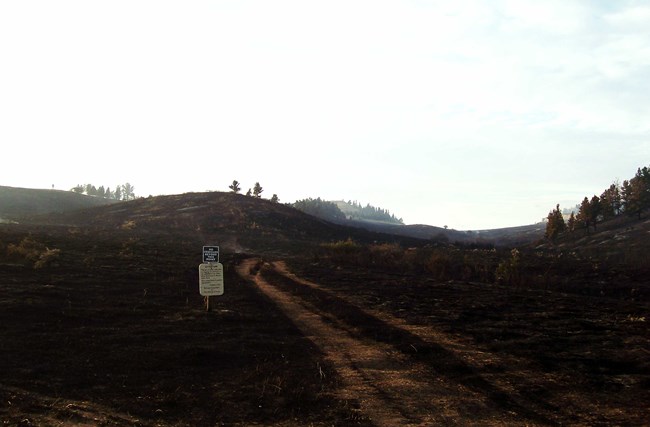
While there are limited historical accounts of the land before the battle, research in the northern plains indicates that similar landscapes typically burned once every two or three decades prior to European settlement. Fire history after the battle is better known, and since fire-intolerant sagebrush had been noted at the time of the battle, the area had likely been free of large fires for several decades. The documented presence or absence of shrubs like sagebrush establishes the timeline of major burns in the area. Large fires typically remove all sagebrush, which then requires several decades to recover. After the United States Cavalry battled the Sioux and Cheyenne on June 25, 1876, the Sioux and Cheyenne ignited grasses west of the Little Bighorn River to cover their retreat. Other than these fires west of the National Monument, the several decades following the battle were apparently free of major fires. Photo evidence indicates an abundance of big sagebrush on the battlefield at this time. Several factors contributed to this sustained lack of fire. The reservation era ended Native American burning practices, and the expansion of agriculture on the plains resulted in fewer fires and greater fire suppression. An intense fire swept across 90% of the monument in August of 1983. This burn helped to fend off encroaching shrubs and invasive species, and allowed for a reseeding of native grasses. Thanks to this fire and several more to follow, the land at the monument resumed much of its historic and natural character. Because of careful management practices, native vegetation still dominates the vegetation cover at Little Bighorn. The current fire season typically runs from July through September. Wind-driven grass fires grow large and move swiftly. They typically last one or two days because of the light and flashy nature of grassland fuels. Unfortunately, most fires are human caused rather than natural. |
Last updated: July 3, 2025
